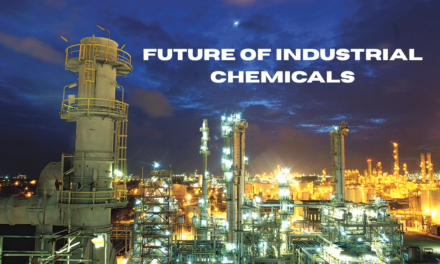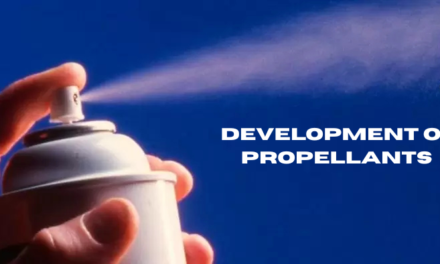Global compliance challenges for pharmaceutical chemicals are multifaceted, stemming from stringent regulatory requirements, varying standards across countries, and the complexity of maintaining quality and safety throughout the supply chain. These challenges impact all stages of the pharmaceutical lifecycle, from raw material sourcing to production, distribution, and post-market surveillance. Here’s an in-depth look at these challenges:
1. Regulatory Variability Across Regions
- Different Standards:
- Regulatory agencies like the FDA (USA), EMA (Europe), PMDA (Japan), CDSCO (India), and others have varying requirements for quality, safety, and efficacy.
- Impact:
- Companies must adapt to multiple compliance frameworks, increasing complexity and costs.
- Examples:
- Good Manufacturing Practice (GMP) standards vary slightly between the US and EU, requiring dual certifications for global distribution.
2. Quality Assurance and GMP Compliance
- Stringent Standards:
- Manufacturers must adhere to GMP regulations to ensure the quality and safety of pharmaceutical chemicals.
- Impact:
- Non-compliance can lead to production shutdowns, recalls, and regulatory penalties.
- Challenges:
- Continuous monitoring and validation of production processes to meet evolving GMP standards.
- Managing changes in raw material suppliers without compromising quality.
3. Supply Chain Integrity
- Counterfeit and Substandard Chemicals:
- Global supply chains are vulnerable to counterfeit or substandard pharmaceutical chemicals, particularly in emerging markets.
- Impact:
- Compromises product quality, patient safety, and company reputation.
- Challenges:
- Ensuring traceability and authenticity of raw materials.
- Implementing robust supply chain security measures, such as serialization and blockchain.
4. Environmental and Safety Regulations
- Pollution Control:
- Regulatory frameworks like the European REACH, US TSCA, and global ISO standards enforce strict controls on chemical waste, emissions, and worker safety.
- Impact:
- Non-compliance with environmental standards can result in fines, operational delays, or plant closures.
- Challenges:
- Managing waste disposal, air emissions, and water treatment while minimizing costs.
- Meeting sustainability goals and reducing carbon footprints.
5. Documentation and Traceability
- Extensive Requirements:
- Regulatory bodies require comprehensive documentation, including Certificates of Analysis (CoA), batch records, and process validation reports.
- Impact:
- Increased administrative burden and risk of errors or delays.
- Challenges:
- Maintaining accurate and complete records for audits and inspections.
- Digitizing and automating documentation processes to ensure compliance.
6. Evolving Regulatory Requirements
- Dynamic Landscape:
- Regulatory guidelines are continuously updated to reflect new scientific advancements and emerging safety concerns.
- Impact:
- Companies must stay up-to-date with changes to avoid compliance lapses.
- Examples:
- Increased scrutiny on nitrosamine impurities in pharmaceutical products following global recalls.
7. Data Integrity
- Strict Data Requirements:
- Ensuring the accuracy, completeness, and security of data in compliance with guidelines like FDA’s 21 CFR Part 11 and EU Annex 11.
- Impact:
- Data breaches or falsification can lead to regulatory actions and loss of trust.
- Challenges:
- Implementing robust IT systems and cybersecurity measures.
- Training personnel to adhere to data integrity protocols.
8. Cross-Border Trade and Export Controls
- Customs and Tariffs:
- Different countries impose tariffs and trade restrictions on certain pharmaceutical chemicals.
- Impact:
- Delays in shipment, increased costs, and potential non-compliance.
- Challenges:
- Navigating export controls, including compliance with dual-use regulations for chemicals with potential military applications.
9. Intellectual Property (IP) Challenges
- Patent Disputes:
- Manufacturing pharmaceutical chemicals may infringe on existing patents, leading to legal and financial risks.
- Impact:
- Delays in product launch and potential penalties.
- Challenges:
- Conducting thorough IP assessments during drug development.
10. Audits and Inspections
- Frequent Monitoring:
- Regulatory bodies and customers conduct regular audits to ensure compliance.
- Impact:
- Non-compliance findings can lead to production halts or product recalls.
- Challenges:
- Preparing for unannounced inspections and managing multiple audits from global regulators.
11. Emerging Markets and Localization
- Regional Specifics:
- Emerging markets may have less harmonized regulatory standards, complicating compliance efforts.
- Impact:
- Increased complexity in navigating local laws and practices.
- Challenges:
- Adapting global practices to meet local regulatory requirements without compromising overall compliance.
12. Sustainability and Corporate Responsibility
- Green Chemistry Compliance:
- Adoption of eco-friendly practices is increasingly mandated by regulators and expected by stakeholders.
- Impact:
- Non-compliance can lead to reputational damage and loss of market share.
- Challenges:
- Balancing cost-effective production with sustainable practices.
13. Clinical Trial Materials Compliance
- Stringent Oversight:
- Pharmaceutical chemicals used in clinical trials are subject to rigorous quality and documentation requirements.
- Impact:
- Delays in meeting compliance can hinder clinical trial progress.
- Challenges:
- Managing fast-changing requirements while maintaining supply integrity.
Strategies to Overcome Compliance Challenges
- Harmonized Standards:
- Aligning operations with global frameworks such as ICH Q7 (Good Manufacturing Practice for APIs).
- Technology Integration:
- Using digital tools like blockchain for traceability, AI for regulatory updates, and ERP systems for documentation.
- Training and Culture:
- Developing a compliance-focused workforce through regular training and awareness programs.
- Third-Party Audits:
- Engaging external auditors to identify gaps and ensure continuous improvement.
Conclusion
Global compliance challenges in pharmaceutical chemicals stem from the complexity of navigating diverse regulatory frameworks, maintaining quality standards, and ensuring sustainability. By adopting advanced technologies, harmonizing processes, and fostering a culture of compliance, companies can mitigate risks, streamline operations, and maintain a competitive edge in the global market.
Hashtags
#GlobalCompliance #PharmaCompliance #RegulatoryChallenges #ChemicalCompliance #PharmaRegulations #APISafety#PharmaChemicals #ActivePharmaceuticalIngredients #APIMarketRegulations #PharmaManufacturing #InternationalStandards #GMPCompliance #GlobalRegulations #ICHGuidelines #FDAApproval #InternationalStandards #PharmaSupplyChain #ManufacturingCompliance #ChemicalSupplyChain #PharmaLogistics #ComplianceInProduction #SustainableCompliance #SafetyStandards #ChemicalSafetyRegulations #GreenCompliance #SafePharma

















